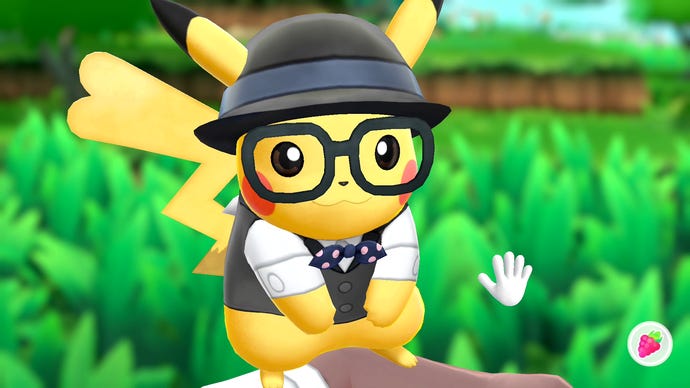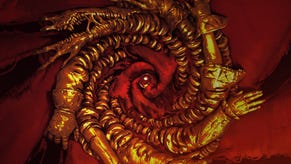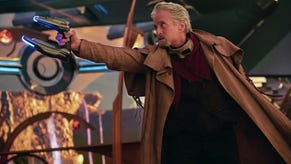Pokemon's co-op experiment was a failure, but that doesn't mean it can't be fixed
Pokemon’s Galar, a narrow island indented with the scars of industrialisation, is truly an idealised version of Britain. In the country I know, the favourite co-op activity of British lads is to visit a curry house, drink import beers to excess, and eat something that immediately fries their taste buds like an EMP. Sword and Shield improves on that pastime with four-player curry cooking. Surrounded by tents and hungry Pokemon at camp, you select unconventional ingredients like sausages and berries, and work together to ensure the food doesn’t burn while you fan the flames.
It’s certainly a lifestyle to aspire to - the only British person I’ve seen actually make a curry in a field is TV chef Nadiya Hussain, and she won Bake Off. I can’t help but harbour some disappointment about Sword and Shield’s approach to co-op, though. Like so many semi-online games today, it’s defined by occasional points of connection - linking up for specifically designed battles or minigames. But last year’s Pokémon: Let's Go showed the potential of an entire shared campaign. The only problem was with the implementation.
If you were the second player in Let’s Go, you were essentially a spirit doomed to haunt the game. While player one could pet their Pokemon and style their hair, even dressing them up in uniforms like precocious children, you walked straight through them. Should you find an item in the grass, you couldn’t pick it up. Instead the best you could do was bring it to the attention of your friend - the one with the real, tangible impact on the world.
Whenever anything of consequence happened - like a conversation with an NPC - you’d be whisked up into the air, disappeared so that nobody had to pay attention to you. Even the camera seemed distinctly uninterested in your presence, clinging to player one as you jogged along behind, like a bodyguard for Kim Jong Un. Slipping off-screen was a common occurrence, leaving you to navigate terrain you couldn’t see, until the game finally, grudgingly, spawned you back into view.
Levelling, collecting, progressing - these were all things that happened to people who actually belonged to the world, not you. This was less co-op functionality, more social experiment to see how devalued you could make somebody feel within the context of a videogame.
Battles were the only place you were allowed corporeal form. There you stood side-by-side with your partner, fielding extra Pokemon on their behalf. Finally you could not only touch the world but swipe and punch at it, making a difference to the outcome of an encounter. In a cruel irony, though, Game Freak failed to balance out these tag-team fights with more enemies. Your participation actually tipped the scales too far in the player’s favour, to the point of boredom. Over prolonged periods, it sucked the tactical joy out of Pokemon’s beloved battle system.
It’s important to put Game Freak’s decision-making into context, since there’s a tendency among hardcore gamers to forget exactly who Pokemon is made for. Let’s Go was a game tuned for bonding sessions between nostalgic parents and their kids.
“There are some difficult trainer battles in the game, so [kids] may have trouble,” game director Junichi Masuda told Polygon. “They wanna ask for help. We used support play to get around players encountering barriers.”
Even so, it’s my feeling that Game Freak may have underestimated the stubbornness and focus of pre-teen children when faced with a difficult game. A generation of LucasArts babies can attest to that.
There are examples, too, of developers who have successfully extended co-op play to games as long and involved as Pokemon without compromise. None among Game Freak’s immediate contemporaries, true, but there are strong models to follow in the West. Look at Divinity: Original Sin, a series of 100-hour plus adventures easily as deep and plodding as your average JRPG.
The task of reconfiguring an already mammoth game so that it treats two players fairly yet rewards their individual achievements, allowing both to shine without one eclipsing the other - well, daunting doesn’t begin to cover it. The magic of Divinity is that it doesn’t even try.
By the sequel, developer Larian had doubled down on the tension that comes with having two heroes vying for items and glory, even encouraging arguments during dialogue. Divinity doesn’t ask players to have the same goals, or even exist on the same screen. Instead they’re free to explore entirely different parts of the world if they like, coming back together to share their spoils and learnings.
Not all of its lessons would fit Game Freak’s mould - Divinity is a sandbox designed to be gleefully broken, whereas Pokemon is a long, straight cycle path waiting to be ridden all the way to the end. But the principle of preserving player freedom in multiplayer, even when it chops up the plot or pacing of the adventure, is one Game Freak could afford to explore. There’s never been a better time to try: the Pokemon community hates them anyway.












